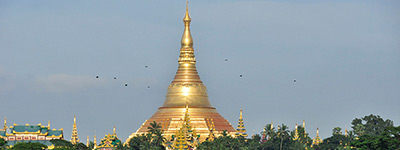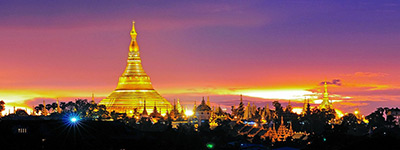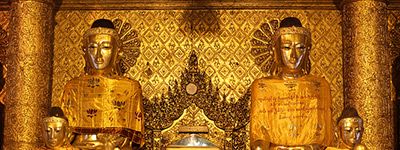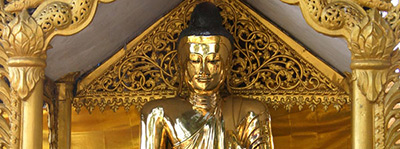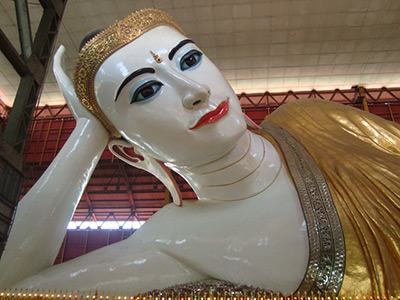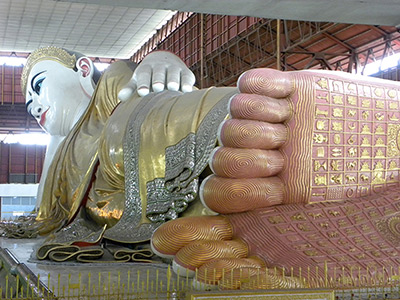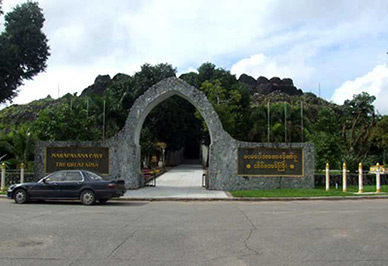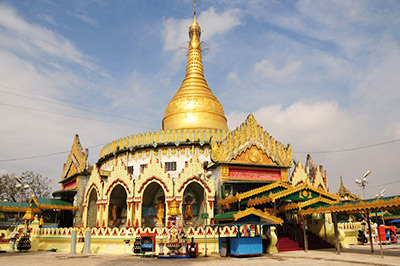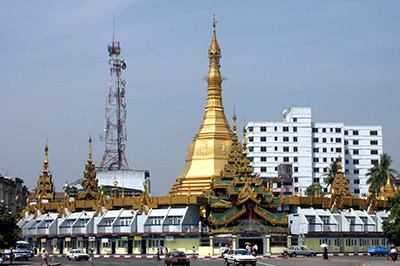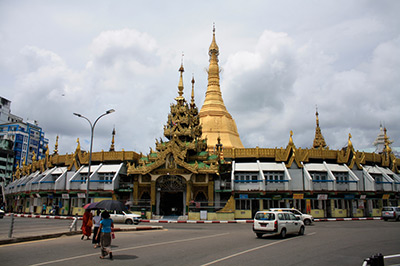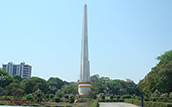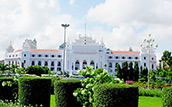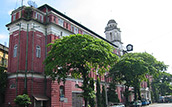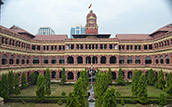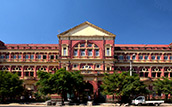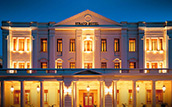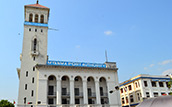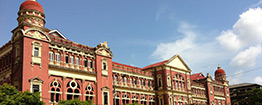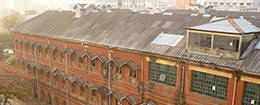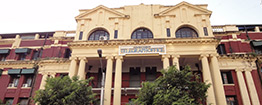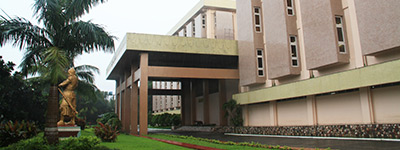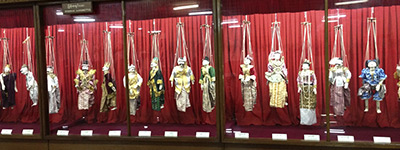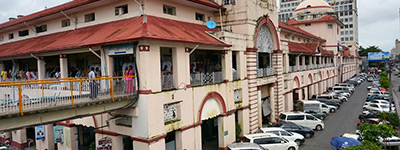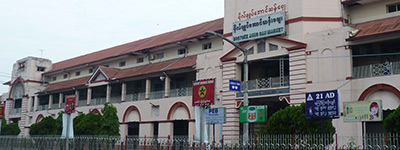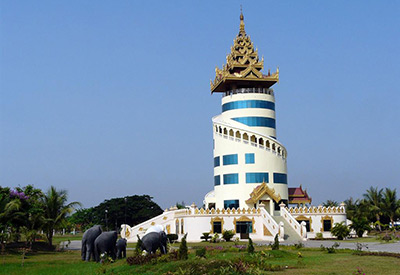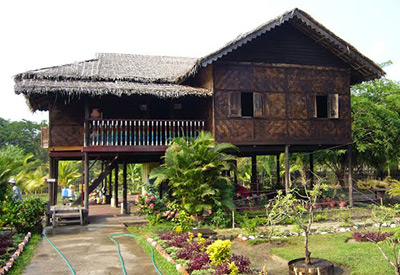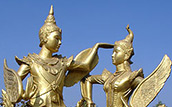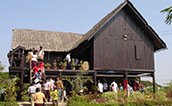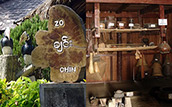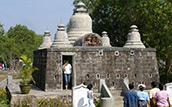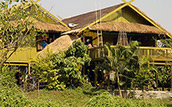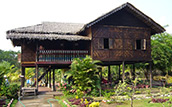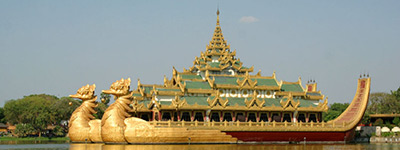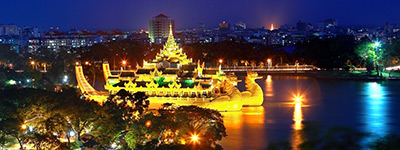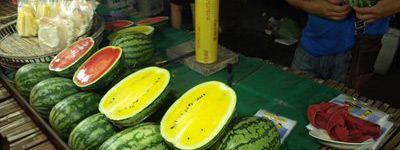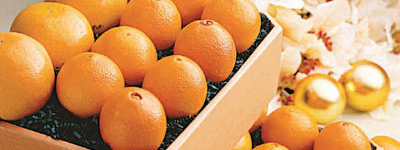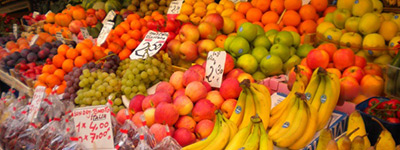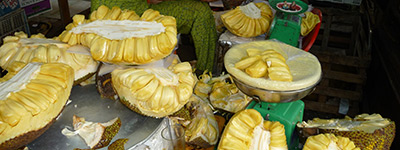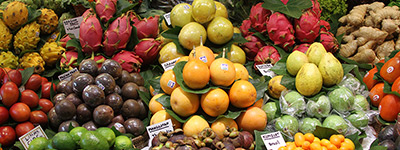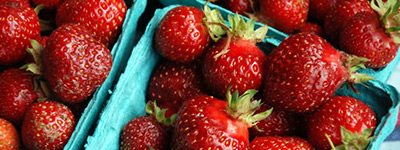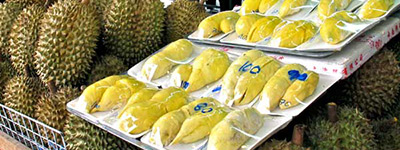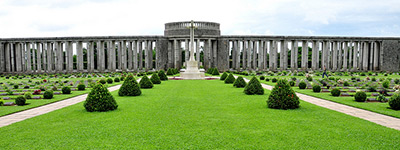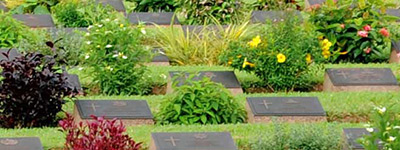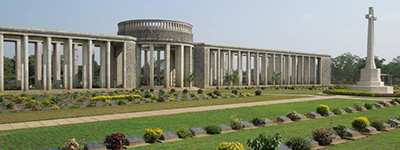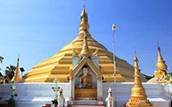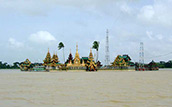Yangon
Ever green and cool with lush tropical trees, shady parks with beautiful lakes, known as Garden city of East. Yangon is the main gateway to Myanmar by air and sea. The pride of Yangon is the world famous Shwedagon Pagoda, the landmark of Myanmar. The golden dome rise s 98 meters above its base and is covered with 11 tons of pure gold. The present day Yangon covers over 350 sq km with 6 million populations. Almost all International Airlines serving Myanmar fly to Yangon International Airport. So one-night stay in Yangon is recommended before visiting up-country and one night at the end of the trip. And full or half a day of Yangon city sightseeing is advised- the highlight being, of course, the Shwedagon Pagoda, Chauk Htat Gyi reclining Buddha, Sule Pagoda, Botahtaung Pagoda and shopping trip to Boyoke (Scott) Market which is closed on every Monday.
Shwedagon Pagoda
No visit to the Union of Myanmar is complete without a visit to the 2,500 years old Shwedagon Pagoda, which enshrines strands of Buddha's hair and other holy relics. Located west of the Royal Lake on 114 -acre Singuttara Hill in Yangon, Shwedagon Pagoda is the most sacred and impressive Buddhist site for the people of the Union of Myanmar. From a humble beginning of 8.2 meters, the Shwedagon Pagoda today stands close to 110 meters. Shwedagon Pagoda is covered with hundreds of gold plates and the top of the stupa is encrusted with 4531 diamonds; the largest of which is a 72 carat diamond. It is clearly one of the wonders of the religious world. Shwedagon Pagoda is a repository of the best in Myanmar heritage – architecture, sculpture and arts. The Shwedagon Pagoda consists hundreds colorful temples, stupas, and statues that reflects the architectural era spanning almost a 2,500 years. To understand this monumental work of art and architecture, visitors will experience an insider's view of this magnificent symbol of Buddhism to the lives of the Myanmar people. Shwedagon Pagoda forms the focus of religious as well as community activities – the bustling of devotees and monks washing the statues, offering flowers, worshiping, and meditating. Shwedagon Pagoda is administered by the Board of Trustees of Shwedagon Pagoda.Shwedagon Pagoda is the most popular and well-known pagoda in Yangon. The pagoda is one of the main tourist destinations in Myanmar. Located on No.1 Shwedagon Pagoda Road. Dagon Township. In Yangon this pagoda is the most notable building in Yangon. The Shwedagon Pagoda is a great cone-shaped Buddhist monument that crowns a hill about one mile north of the Cantonment. The pagoda itself is a solid brick stupa (Buddhist reliquary) that is completely covered with gold. It rises 326 feet (99 m) on a hill 168 feet (51 m) above the city.
Structure of Shwedagon
The perimeter of the base of the Pagoda is 1.420 fees and its height 326 feet above the platform. The base is surrounded by 64 small pagodas with four larger. One in the center of each side. There also are 4 sphinxes. One at each corner with 6 leogryphs. 3 on each side of them. Projecting beyond the base of the Pagoda. One on the center of each side is Tazaungs in which images of the Buddha are and where offerings are made. There are also figures of elephants crouching and men kneeling nd pedestals for offerings all around the base. In front of the 72 shrines surrounding the base of the Pagoda. You will find in several places images of lions. serpents. ogres. yogis. spirits. or Wathundari. On the wall below the first terrace of the Pagoda at the West-Southern Ward and West-Northern Ward corners. You will see embossed figures. The former represents King Okkalapa who first built the Pagoda. The latter is a pair of figures; the one above represents Sakka who assisted in foundation of the Pagoda and the one below. Me Lamu. consort of Sakka and mother of Okkalapa.
Tunnels of Shwedagon
There are 4 entrances leading into the base of this great Shwedagon Pagoda. No one is sure what is inside. According to some legendary tales. There are flying and turning swords that never stop. Which protect the pagoda from intruders; some says there are even underground tunnels that lead to Bagan and Thailand.
Botahtaung Pagoda
The Botahtaung Pagoda, located in the downtown area of the city beside the Yangon river, is one of the tourist attractions of Myanmar travel. The Pagoda has a spectacular view of the Yangon river. The tradition says that one thousand military officers from India came to Dagon escorting the Buddha's relics. It was named after those one thousand officers; "Bo" represents officers and "tahtaung" one thousand. The tradition goes on to say that two sacred hairs and unspecified amount of treasures are buried beneath the pagoda.
Chaukhtatgyi Pagoda
Chauk Htat Gyi Pagoda is located on Shwe Gon Taing Road. Tamwe Township. Yangon. Similar ones are Ngar Htat Gyi Buddha (5-Storey-High Buddha) and Koe Htat Gyi Buddha (9-Storey-High Buddha). Chauk Htat Gyi is the 6-Storey-High Buddha Image.The Chauk Htat Gyi Pagoda is famous for its huge image of Reclining Buddha. built in 1966 replacing the old image built in 1907 by Sir Hpo Thar. But it was suffered damage due to climate over the years. In 1957 it was demolished and rebuilt to this structure in 1966. It measures 65 meters and is housed in an iron structure with corrugated iron sheets roof of six layers.Hence it is generally referred to as the six-tiered pagodas. The heavy cost of this construction was entirely donated by the people. The image is larger than the image of the Reclining Buddha at Shwe Thar Hlyaung Pagoda in Bago. The monasteries in the vicinity of this pagoda accommodate over six hundred monks who study Buddhist Scriptures from the senior and qualified monks. The entire cost of maintenance is met from the people's donations.
Travel Tips
Opening Hours - 6am to 8pm daily
Admission Fees - Free
Location - Shwe Gon Taing Road. Tamwe Township
Kabaraye Pagoda
Kabar Aye Pagoda is located on Kabar Aye Road. Mayangone Township. Yangon. Myanmar. The name “Kaba Aye” in Myanmar means “World Peace” to which this pagoda is dedicated.Different from the other pagodas. Kabar Aye Pagoda was only built during 1952. This pagoda is significant for the Sixth World Buddhist Synod which was held in its large precinct in 1954. Myanmar people are Theravada Buddhist and are very deeply devoted to the religion. For the Sixth Buddhist Council. which was held during 1954-56. the Kabar Aye Pagoda was built in dedication to the council. The pagoda was built in 1954. The Kabar Aye Pagoda compound is a large one intended to have peace and quiet environment for the monks (Sangas) and the
Structure
The circular platform around the main pagoda is enclosed in the manner of a cave-temple and there are five porches decorated in the traditional style of flamboyant arched pediments. lotus flowers. Lotus buds and the swastika motif in carved stucco. The main pagoda is 117 feet 6 inches (35.82m) high with subsidiary smaller pagodas on the five porches each 8 feet (2.4m) high. The compound of the Kabar Aye Pagoda is a large one consisting of many monasteries and the stairways to the pagoda are full of vendors on both sides selling many hand made products. The Buddhist Art Museum. Maha Pasana Cave and newly built Wizaya Mingala Dhammathabin Hall are also located in the same precinct.
Travel Tips
Opening Hours - 6am to 8pm daily
Admission Fees - Free
Location - Kabar Aye Road. Mayangone Township. Yangon. Myanmar
Mahapasana Cave
Built by Burma's first Prime Minster, U Na, in 1952, Mahapasana Cave was constructed for the sixth Buddhist Synod (1954-1956). Also known as 'Great Cave', it took more than a year to build the man-made cave which is a replica of an Indian cave by the same name. It can hold up to 10,000 people.In 1952, 2500 monks gathered to recite the words of Buddha in Pali. This gathering was organized to coincide with the 2500th anniversary of the enlightenment of Buddha.U Na was a devout Buddhist. One of his goals was to establish Buddhism as the official religion of Burma. August 29, 1961 Parliament announced Buddhism as the official state religion (cow slaughtering was officially banned).There were ....and still are....numerous religious minorities in Burma who felt alienated. In 1962, new Prime Minister Ne Win repealed the ruling. He and most Buddhists felt that Buddhism should not be part of a political institution: that a separation of social practice and state was needed.
Buddha tooth relic Pagoda
This pagoda is called Shwedaw paya in Myanmar which means Buddha Tooth Relic pagoda. In This pagoda there is Lord Buddha Tooth Relic.
Sule Pagoda
Sule Pagoda is located in the center of Yangon. at the junction of Sule Pagoda Road and Mahabandoola Road. Kyauktada Township. Yangon. Myanmar. This 48 meter (152 feet) high golden dome was used by the British as the nucleus of their grid pattern for the city when it was rebuilt in the 1880s. The pagoda's peculiarity is its octagonal- shaped pagoda. which retains its shape as it tapers to the spire.The Sule Pagoda is an excellent landmark. It is said to be over 2.000 years old. The pagoda is said to enshrine a hair of the Buddha: its Mon name. Kyaik Athok translates as "the pagoda where a Sacred Hair Relic is enshrined". The golden pagoda is unusual in that its octagonal shape continues right up to the bell and inverted bowl. It is surrounded by small shops and all the familiar non-religious services such as of astrologists. palmists. and so on.In the downtown area Sule Pagoda is a monument which most foreign visitors pass by unnoticed. But it is the only central piece of the capital. like the Arc de Triumph in ParisIt is the Sule Pagoda. Its legend says that Sule Pagoda marks the site where King Ukkalapa held meetings to build Shwedagon. "Su-Wei" is a Myanmar word meaning "meeting". In course of time 'Su-Wei' corrupted to 'Su-Le' Successive town planners. King Thayawaddy. Montgomery. Fraser and others. all decided to keep Sule Pagoda as the centre piece of Yangon because of its strategic location. religious significance and artistic beauty. It can be reached through four entrances of the four stairways facing four cardinal directions or by two overhead bridges.
Travel Tips
Opening Hours - 4am to 10pm daily
Admission Fees - US$2 per person
Location - Located in the center of Yangon. at the junction of Sule Pagoda Road and Mahabandoola Road. Kyauktada Township. Yangon. Myanmar.
Independent monument
The Independence Monument is located in the center of Maha Bandoola Park in Downtown Yangon. It commemorates the independence of Burma from the British in 1948.
Colonial Town (Pansodan Street)
Yangon's Colonial Buildings
Downtown Yangon is known for the highest number of colonial period buildings in Southeast Asia. The former High Court, the former Inland Water Transport building, the former Secretariat buildings and the Strand Hotel are excellent examples of the Yangon's past. Century-old buildings with magnificent architecture are main tourist attraction in downtown Yangon.
Yangon City Hall
Yangon City Hall is centrally located in downtown Yangon. The City Hall building is considered to be a fine example of Myanmar architecture. The construction of this building started in 1926 and ended in 1936. The building is enlisted on the Yangon City Heritage List.(The Independence Monument in Yangon)The Independence Monument is an obelisk with a height of 46 meters, which is surrounded by five smaller pillars of 9 meters.
Custom House
This is probably one of the well-preserved British colonial buildings in Yangon. The Customs House is located along the Strand Road where most colonial buildings stand today as colonial heritage sites.
High Court Building
Formerly known as the Parliament for Justice, this building was constructed in 1914, before World War I. In 1962, the Government turned it into a High Court Head Office.
Inland Water Transport Building
This building is one of the colonial buildings situated in downtown Yangon. IWT manages passenger cruises and cargo ships along the rivers in Myanmar.
Strand Hotel
The Strand Hotel is one of Southeast Asia’s grand colonial hotels. The Victorian-style hotel is located in Yangon, built in 1896 by Aviet and Tigran Sarkie, two of the Sarkies Brothers. The hotel, which opened in 1901, faces the Yangon River to its South.
Myanmar Port Authority Building
The unique preservation of Myanmar Port Authority was built in 1920. It was restored to her former beauty. It is one of the colonial buildings, situated in downtown Yangon.
Secretariat Buildings or Ministers' Building
The Ministers' Building (the Ministers' Office); formerly The Secretariat or Secretariat Building is occupied an entire city block, bounded by Anawrahta Road to the north, Theinbyu Road to the east, Maha Bandoola Road to the south and Bo Aung Kyaw Street to the west in downtown Yangon. It was the home and administrative seat of British Burma and built in the late 1800s. The structure is more than 120 years old. It was where General Aung San and 6 cabinet ministers were assassinated on 19 July 1947. The building is currently on the Yangon City Heritage List and completely abandoned.
Some other Colonial Buildings
National Museum
The National Museum Yangon was first inaugurated in June 1952, at the Jubilee Hall, Shwedagon Pagoda Road, and Yangon. The museum was then shifted to another building on Pansodan Road on the 8 Febrary 1970. Once again in 1996, the museum shifted for the third time to area of 3.804 acres at 66/74 Pyay Road, Yangonin. This is the museum’s present location.The museum has a rich collection of art and material culture of the indigenous people of Myanmar, royal regalia, musical instruments, decorative arts and two art galleries. The artefacts are displayed in 14 galleries in a five-storey building. The galleries are arranged in the following themes:
- Myanmar Epigraphy and Calligraphy
- Lion Throne
- Yadanapon Period
- Royal Regalia
- Myanmar Historic Period
- Myanmar Prehistoric period and Proto-historic period
- Natural History
- Myanmar Traditional Folk Art
- Myanmar Performing
- Myanmar Art Gallery (1) and (2)
- Myanmar Ancient Ornaments
- Buddha Images
- The Culture of National peace
- Twelve national objectives and National Building Endeavors
Collection Size: There are nearly five thousand permanent objects in the museum.
Collection Types: Stone, primate fossils, bronze, iron, silver, painting (oil colour and water colour, ink, sketches, pencil, charcoal, Etching, Paper-cut, mural painting, parabeik painting, Myanmar ancient ornaments made of gold and precious stone from successive periods, ancient Buddha statues made of stone, gold, silver, lead, bronze, wood and others, textile, fabric, leather, palm-leaf, musical instruments , puppets, royal regalia and so on.
Gems Museum
Burma is famous for its jade, rubies, sapphires and natural pearls. The Gem Museum in Yangon is an excellent place to both view and buy these precious stones.
Bogyoke Market (Scott Market)
Bogyoke Aung San Market is situated in the heart of Yangon on Bogyoke Aung San Road. The name of this road was also named after the market. The Bogyoke Aung San Market is the most popular market and a great tourist destination in Yangon. It is one of the precious colonial buildings you can find in Yangon.The market was first built and inaugurated on the present premises in 1926. It was named Scott Market after Mr. C. Scott. Then it is Municipal Commissioner nowadays. It is called Bogyoke Aung San Market in honour of our national leader General Aung San who was assassinated in 1947
Structure
There are 1.641 shops selling luxury items, handicrafts foodstuffs clothing jewelry fashion and consumer goods. The market is a square type based and therefore divided into the East wing, West wing, North wing and South wing. The shopping items are not categorized in the respective wings. Looking around and finding the most suitable item would be fun. There are also traditional. Myanmar and Chinese food stalls in the market.Event Bogyoke Aung San Market is also well-known for the pre-Thingyan festival also called the Zay Thingyan meaning the Market's water festival. It is usually held on the 11th or 12th of April. Youngsters from all over the city come to the market dressed for the festival. The shops donate traditional food such as Monte Lone Yay Paw, Thargu and Shwe Yin Aye.
Travel Tips
Opening Hours - 9:00 am to 5:00 pm. Close on gazette holiday.
Admission Fees - Free
Location - Bogyoke Aung San Market is situated in the heart of Yangon. on Bogyoke Aung San Road
National races village
National Races Village is located near Thanlyin Bridge, Thaketa Township,Yangon. National races village was constructed by Ministry of Progress of Border Areas and National Races and Development Affairs is situated in Tharketa Township. on the left of Yangon-Thanlyin Bridge.
Contents of National Races Village
- Nan Myint Tower
- Bamar Village
- Rakhine Village
- Htokekhanthein
- Mon Village
- Kyaikhtiyo Pagoda
- Kayin Village
- Mt. Zwegabin
- Chin Village
- Reed Lake
- Kachin Village
- Mt. Khakaborazi
- Shan Village
- Inlay Lake
- Kayah Village
- Taung Gwe Pagoda and Ngwe Taung Dam
- Sekka Nyinaung Pagoda
- Shin Upagotta Pavilion & Pond
- Crocodile Firm
- Bird Sanctuary
- Golden Deer
- Handicraft Center
- Main Hall
- Grand Gate
- Play Ground
- Admin Office
- Forestry Demonstration Plot
- Main Gate
- Mangrove Ecotourism
- Orchid Garden
If you visit the village. you will not only enjoy fresh breeze blowing across Bago River but also get the sense of Union Spirit from the village of our national brethern. Kachin. Kayah. Kayin. Chin. Bamar. Mon. Rakhine and Shan. You can see buildings with significant symbols denoting various national races residing in the country.
Kachin
Firstly. you will see a sampling of traditional house of Kachin national. Kachin nationals reside mostly at the northern tip of Myanmar. If you observe the Kachin traditional house. it is found to be constructed like that of one of the elders of Kachin nationals. Construction materials are wood. bamboo and thatch. The left side of the house is used like the back of any kinds of houses. with kitchen. etc. Wooden mortar and pestle. firewood and household goods are kept at the rear of the house. Traditional utensils are depicted on the pillars of the house in the form of paintings. At the back of the house. there is a ground where the traditional Manaw can be held. If the house has Manaw pillar as in the form of a totem pole. the owner of the house is the elder who can hold Manaw Festival which is the traditional Kachin Festival. Moekyoe Nat room or compartment for spirits is found only in the house of national race elders. Moreover. living room. shrine for Nat. front room. kitchen and room for virgins are seen separately.
Kayah
Kayah nationals reside in the east of Myanmar. Now. you can see the traditional Kayah house as it is in Kayah State. The house is on stilts and cattle and pigs are bred under it. There is no window in their original houses because of the cold most of the time in Kayah State. To resist the severe weather. roofing goes past the floor and nearly touches the ground. Kayah nationals produce cotton textiles by handloom handed down by their ancestors. Processing of materials is shown step-by-step. Cross-bow. arrows and fish trap are also shown. There are two fireplaces-one for the host and one for the guest to warm them when cold and also to cook. They usually have a meal in a big circular bamboo/lacquer ware tray with legs. Kayah nationals used to drink intoxicating brew made by them. So. you can see receptacles for intoxicating drinks and mugs usually made of bamboo. Moreover. musical instruments such as the Phasi or bronze frog drum and buffalo horn used as clarion are also shown. Kayah national women wear clothes usually woven on a back strap loom by her.
Kayin
If you want to observe Kayin traditional house. you will see bronze frog drum and buffalo horn first. Kayin nationals mostly live in the south east of Myanmar. Bronze frog drum is a symbol of Kayin national races and buffalo horn is a musical instrument played in their leisure time.There are four rooms in the Kayin traditional house.Fruits. betel nuts and paddy are put out to dry on the open extension of the floor. Parents and brothers sleep in the front room. You can go to the kitchen through virgin's room. Clothing woven on a Kayin traditional back strap loom is also seen there. Therefore. if you view a traditional house. you can get a glimpse of ideas and customs of construction. living standard. culture. arts and crafts and also lifestyles of each national. From the National Races Village. we can extensively learn about customs and traditions of Myanmar national races who brethren cherish their culture and customs. in one place.
Chin
Among the national races. we would like to give a feature on Chin traditional house. Chin national races are residing in western Myanmar. You can see blacksmith's forge at the entrance of the house. From here you will get to living room which has no partition or a window. In front of the living room. there is a private room for bachelors. You can get there by climbing a wooden ladder. In the kitchen you can see 3 shelf of rock placed. On the lowest shelf. fish and meat are dried. Chin nationals used to place brass pot. water pot. rice- wine pot. cotton spinned machine. cradle and musical instruments in the living room. Gong is the most exalted thing of Chin nationals. Back strap loom weaves for their traditional clothes and blankets. You can also see chin traditional dance which is very enjoyable.
Mon
Similarly. Mon nationals have their traditional houses. The house is built sticks. Living room is a step lower than the main part of the house. Crocodile shaped three stringed musical instruments is also interesting. In the living room. they also hang their traditional clothes. The Significant item of Mon traditional house is a hole for talking love affairs while the landlord lady round the wood with her beloved man at night time every house as the well framed wood left right. You will find Mon traditional dance which is very interesting.
Rakhine
Rakhine nationals live in western part of Myanmar. The house is 9 feet high and has many rooms. Living room is at the very first entrance of the house. On the left of living room. there is a shrine room. then parent's room and unmarried sons and daughter's room. Passing them. you will get to kitchen and dining room.In the courtyard. there is a well and a special bathroom. You can see the beauty of Rakhine nationals and the traditional dance. You can see the beauty of Rakhine nationals and the traditional dance. If you visit a traditional house of national races. you can observe their customs and the way the houses built in accord with the tradition decorated with handicrafts and you will see the dress style too.
Shan
This is a Shan traditional house. Shan nationals live in eastern part of Myanmar. At the base of the ladder. There is a water pot for foot washing. There are two kinds of living room. The inner one is for invited guests and the outer one for unexpected guests. At a lower step of the outer. Living room. there is a balcony where enjoyable Shan traditional dances take place. In the inner living room. you can see the shrine shelf and traditional utensils. The kitchen is at a lower step of the dining room.
Bamar
There are many rooms composed in Bamar traditional house. Firstly. you will get to the living room at the entrance of the house. There. Bamar traditional choice of food and drink betel box. pickled tea leaves. Cheroot cigar and green tea pot are always served. Traditional musical instruments harp. xylophone. etc are in the living room. The kitchen is in separate part of the house. Household utensils are placed in the kitchen. Loom is under the house where the traditional cloths are weaved. There are well. granary and bullock cart in the courtyard. When you get to a traditional house. you can observe the customs ways of living. Handicrafts and style of dress.
Travel Tips
Opening Hours - Open daily 10:00 am to 5:00 pm. except Myanmar New Year Holidays (Thingyan Festival)
in April Admission Fees - US$3 per person
Location - Located near Thanlyin Bridge. Thaketa Township
Karaweik Palace
Karaweik Hall is located in the Kandawgyi Royal Lake. on the Kandawgyi Kan Pat Road. It is situated in the Kandawgyi Nature Park.Karaweik Hall is a landmark of Yangon. locating in Kandawgyi (Royal) Lake. This modern architecture of a mythical creature Karaweik. has 3 floors and ceremonies are held in it. This whole building was gilded with gold about 20 years ago.The Karaweik Hall. including the ancient traditional Karaweik renovated in tasteful style. its beauty enhanced by the Kandawgyi which adds grandeur of Yangon. the Garden City. with added attractions such as showrooms of ten traditional arts. shops. amusement section for children and ample parking space. Karaweik Palace will serve lunch and dinner with Myanmar. Chinese and Eastern and western cuisine at moderate prices. in the ornate halls. accompanied by a variety of traditional entertainment. On the Kandawgyi Beltway. it is conveniently located for diplomatic functions and business meets. The cozy Lawkanat and Shwewa Rooms will serve private and limated groups while the large Ottara and Dekhina Halls are designed for gala occasions. Karaweik Palace will cater for weddings and other receptions. social and business events for all occasions guaranteeing efficiency and satisfaction.
Travel Tips
Opening Hours - 4am to 10pm daily
Admission Fees to the Kandawgyi Nature Park - Kyats 1,000 per person
Admission Fees to the Karaweik Hall - Kyats 30,000 per person
Location - Kandawgyi Royal Lake. Kandawgyi Nature Park
Fruits Market ( Thirimingalar Market)
Myanmar has a huge supply of fresh fruit on every corner. Most fruits come to the big cities by road and river from the surrounding towns.
That’s right, yellow watermelon exists!
Banana baskets like these ones, made from bamboo, are everywhere and local people buy them to use as offerings in the temples.
I would say sour plums are the most popular with the locals. Sour plums are bake out in the sun and heat. Quite strong flavour but you should try them! Jackfruit has it origins in the south western rain forests of India. It is the largest tree-borne fruit and can weigh up to 35 kg.
Durian! Of course it’s popular in Myanmar too. It’s known as “the king of fruits” in South East Asia. Durian is known for being large, having a very strong smell, and a thorn-covered husk. The smell is so strong that quite often you see “no durian” signs in hotels, airports and on public transport.
Allied War Memorial Cemetery (Htauk Kyant)
The Allied War Memorial Cemetery is located at Htauk Kyant,Mingaladon Township, 32km from Yangon, on the way to Bago. It was built in 1951. It is a memorial cemetery of the Allied soldiers who died in the Myanmar Campaign during World War II. The cemetery is peaceful and its beautifully kept grounds has 27,000 stone graves of fallen Commonwealth and Allied soldiers. Htauk Kyant War cemetery is the largest of the three war cemeteries in Myanmar.
Allied War Memorial Cemetery at Htauk Kyant
Syriam (Thanlyin)
Kyaik Khauk Paya
The Kyaik Khauk Paya is a beautiful impressive pagoda in the same style as the Shwedagon Pagoda in Yangon. The pagoda is believed to have been built more than 2,000 years ago, after which it has been enlarged and renovated many times. The base of the pagoda is surrounded by many small golden stupas. The temple area is open to visitors; as in any Burmese temple, please remove shoes and socks. The pagoda is located on a small hill on Kyaik Khauk Pagoda road heading towards Kyauktan in the South East corner of Thanlyin town.
Kyauktan Yele Pagoda
Ye Le Paya at Kyauk Tan means the pagoda in mid-stream built on a laterite reef. It was built by King Zeyasana. the seventh king of the Pada Dynasty in the third century BC. The first pagoda was only 11 feet high. The pagoda complex comprises several buildings including a monastery. Pilgrims and visitors are ferried across to the pagoda. One can feed shoals of long river catfish. which surface to snatch tit-bits of food thrown at them. When food is thrown. they reach out to snap at it. revealing their size. which can reach up to one meter in length.


